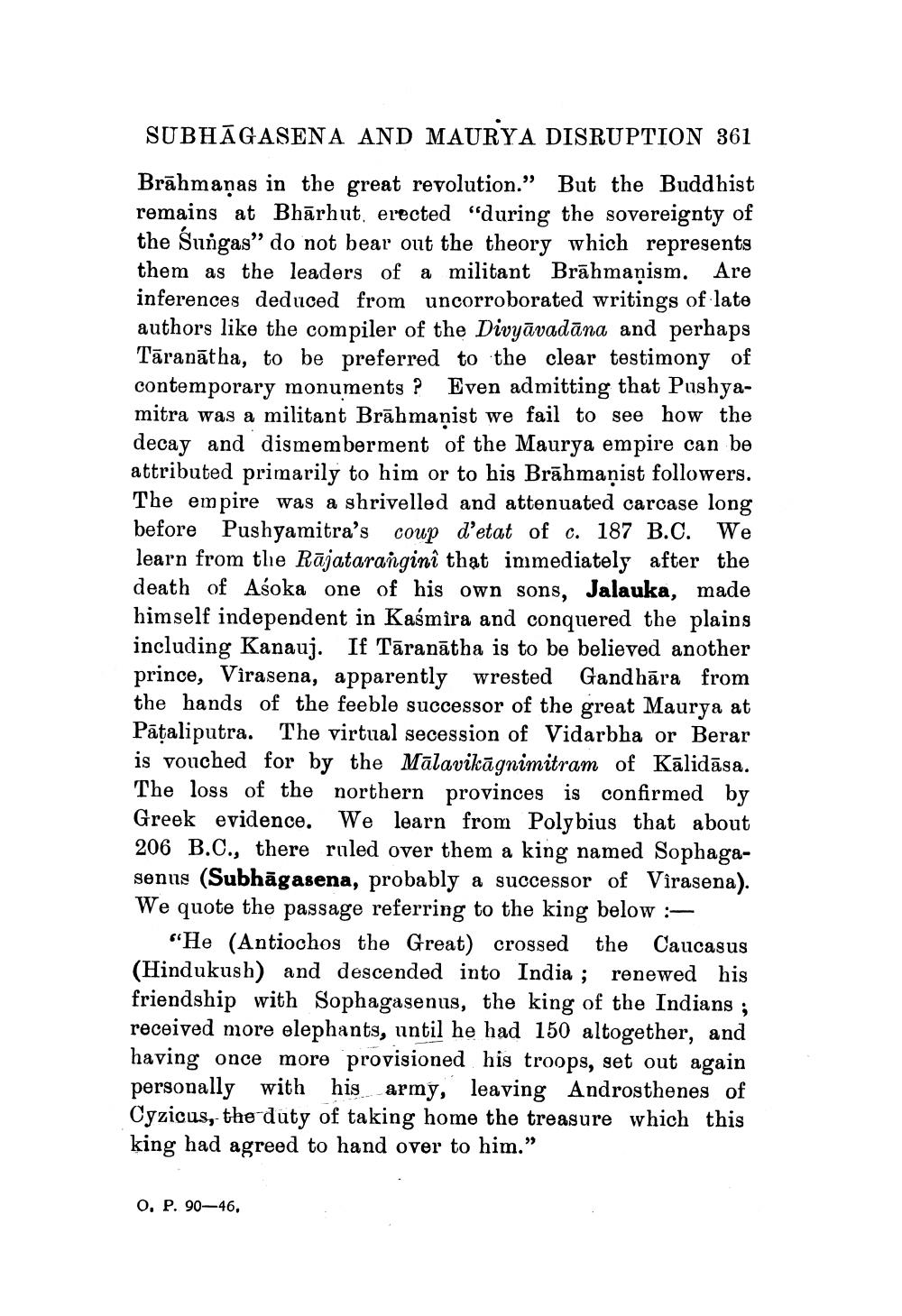________________
SUBHĀGASENA AND MAURYA DISRUPTION 361 Brāhmaṇas in the great revolution.” But the Buddhist remains at Bhārhut, erected "during the sovereignty of the Sungas” do not bear out the theory which represents them as the leaders of a militant Brāhmaṇism. Are inferences deduced from uncorroborated writings of late authors like the compiler of the Divyāvadāna and perhaps Tāranātha, to be preferred to the clear testimony of contemporary monuments ? Even admitting that Pushyamitra was a militant Brāhmaṇist we fail to see how the decay and dismemberment of the Maurya empire can be attributed primarily to him or to his Brāhmaṇist followers. The empire was a shrivelled and attenuated carcase long before Pushyamitra's coup d'etat of c. 187 B.C. We learn from the Rājataranginî thạt immediately after the death of Asoka one of his own sons, Jalauka, made himself independent in Kaśmîra and conquered the plains including Kanauj. If Tāranātha is to be believed another prince, Virasena, apparently wrested Gandhāra from the hands of the feeble successor of the great Maurya at Pātaliputra. The virtual secession of Vidarbha or Berar is vouched for by the Mālavikāgnimitram of Kālidāsa. The loss of the northern provinces is confirmed by Greek evidence. We learn from Polybius that about 206 B.C., there ruled over them a king named Sophagasenus (Subhāgasena, probably a successor of Virasena). We quote the passage referring to the king below :
"He (Antiochos the Great) crossed the Caucasus (Hindukush) and descended into India ; renewed his friendship with Sophagasenus, the king of the Indians ; received more elephants, until he had 150 altogether, and having once more provisioned his troops, set out again personally with his army, leaving Androsthenes of Cyzicus, the duty of taking home the treasure which this king had agreed to hand over to him.”
O, P. 90—46.




